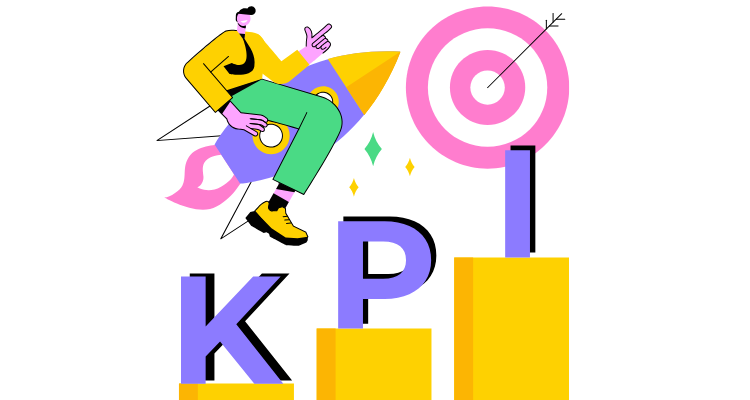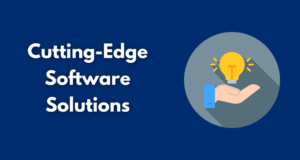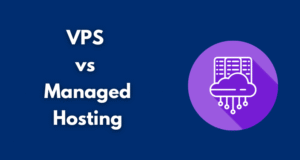Marketing teams waste $37 billion annually on misaligned audience targeting. Companies blast messages into digital voids, hoping something sticks.
But precision targeting isn’t rocket science anymore. Modern audience intelligence transforms random spray-and-pray tactics into surgical strikes that convert browsers into buyers.
Table of Contents
ToggleThe Hidden Cost of Audience Misalignment
Every mistargeted ad dollar compounds into massive opportunity costs. Research indicates that 76% of marketing budgets evaporate through poor audience segmentation, while companies achieving proper alignment see conversion rates jump 23% within months.
Consider the mathematics: A $10,000 monthly ad spend targeting incorrect demographics yields approximately $2,300 in returns. That same budget, properly directed, generates $8,700 in revenue. The difference? Understanding who actually wants your product versus who you think should want it.
Traditional demographic segmentation (age, location, income) tells incomplete stories. A 35-year-old executive in Manhattan might share zero buying behaviors with another 35-year-old executive three blocks away. Surface-level categorization creates expensive assumptions that sabotage campaigns before they launch.
Behavioral Signals Trump Demographics

Purchase intent reveals itself through digital breadcrumbs: search patterns, content consumption, engagement timing. Someone researching “enterprise CRM comparison” at 2 AM demonstrates different intent than casual afternoon browsers reading “what is CRM” articles.
Smart marketers leverage GoAudience and similar platforms to decode these behavioral patterns. The technology identifies micro-segments exhibiting actual purchase signals rather than assumed interest based on job titles or zip codes. Companies utilizing behavioral intelligence report 47% higher qualified lead rates compared to demographic-only targeting.
Intent data operates across multiple dimensions. Website visits indicate interest levels; download patterns reveal urgency; social engagement demonstrates brand affinity. Combining these signals creates three-dimensional audience profiles that predict purchase probability with 82% accuracy (versus 31% for demographic targeting alone). According to research from MIT Sloan, companies leveraging advanced analytics for customer insights achieve 23% higher revenue growth than their peers.
The Technology Stack for Audience Intelligence
Modern audience building requires sophisticated infrastructure beyond basic analytics. Marketing teams need integrated systems that capture, process, and activate audience insights across channels.
First-party data collection forms the foundation. Website pixels, CRM integrations, and email engagement metrics provide proprietary insights competitors can’t replicate. But isolated first-party data creates tunnel vision: you only see customers who already found you.
Third-party enrichment expands visibility exponentially. Professional audience platforms aggregate signals from thousands of sources, revealing prospects exhibiting similar behaviors to your best customers. This expanded view identifies opportunity pools 10x larger than organic discovery allows.
Machine learning algorithms continuously refine audience definitions. Initial segments might include 10,000 prospects; after analyzing conversion patterns, algorithms identify the 1,000 most likely buyers. This iterative refinement reduces acquisition costs by 65% within six campaign cycles. McKinsey’s analysis shows that companies excelling at personalization generate 40% more revenue from these activities than average players.
Segmentation Strategies That Drive Revenue

Effective segmentation transcends basic categorization. Revenue-generating segments share three characteristics: measurable intent, accessible channels, and profitable lifetime value.
Lifecycle positioning matters more than industry verticals. A startup evaluating solutions behaves differently than an enterprise replacing legacy systems. Segment by journey stage: researchers, evaluators, decision-makers. Each requires distinct messaging, content formats, and conversion paths.
Psychographic layering adds precision to behavioral data. Two prospects might visit identical websites but driven by different motivations. One seeks efficiency improvements; another wants cost reduction. Tailored messaging addressing specific pain points increases engagement rates 3.2x compared to generic value propositions.
Micro-segmentation enables hyper-personalization without creepy tracking. Instead of “males 25-34 interested in fitness,” target “morning workout enthusiasts comparing protein supplements.” Specific segments receive relevant messages that feel helpful rather than intrusive.
Attribution Models That Reveal True Impact
Most attribution models credit last-touch interactions, ignoring the audience development journey. A prospect might encounter seven touchpoints before converting; crediting only the final email distorts campaign effectiveness.
Multi-touch attribution illuminates the complete funnel. Display ads introduce brands, content marketing builds trust, retargeting maintains awareness, email nurtures consideration. Understanding each channel’s role in audience development prevents premature optimization decisions.
Data-driven attribution assigns fractional credit based on actual impact. Machine learning analyzes thousands of customer journeys, determining which touchpoints genuinely influence purchases. Marketing teams discover that seemingly unsuccessful channels actually initiate 40% of eventual conversions.
Custom attribution models accommodate unique business dynamics. B2B companies with 18-month sales cycles weight touchpoints differently than e-commerce sites with immediate purchases. Tailored models provide actionable insights rather than generic benchmarks.
Scaling Personalization Without Losing Authenticity
Automation enables personalization at scale, but mechanical customization feels robotic. Successful audience engagement balances efficiency with genuine human connection.
Dynamic content systems adapt messaging based on audience attributes. Rather than creating 50 email versions, build modular components that combine intelligently. Headlines adjust for industry, body copy reflects company size, calls-to-action match funnel stage. One template serves dozens of segments authentically.
Predictive analytics anticipate audience needs before explicit expression. If similar profiles typically request demos after downloading three whitepapers, proactively offer scheduling options. Anticipatory engagement feels thoughtful, not pushy.
Testing frameworks validate personalization effectiveness. A/B tests reveal whether manufacturing executives prefer technical specifications or ROI calculators. Continuous experimentation refines audience understanding beyond initial assumptions.
Measurement Frameworks for Continuous Improvement

Vanity metrics (impressions, clicks, followers) obscure genuine audience quality. Revenue-focused measurement tracks metrics that matter: customer acquisition cost, lifetime value, and payback period.
Cohort analysis reveals audience evolution over time. January’s acquired customers might demonstrate different behaviors than October’s cohort. Tracking cohort performance identifies seasonal patterns, channel effectiveness, and message resonance shifts.
Leading indicators predict future performance before revenue materializes. Engagement depth, content velocity, and qualification scores forecast conversion probability weeks ahead. Early warning systems enable course correction before campaigns fail.
Competitive benchmarking contextualizes performance. If industry-average conversion rates hover around 2.3%, achieving 2.5% isn’t revolutionary. But reaching 5.7% through superior audience targeting justifies increased investment.
Privacy-First Audience Development
Regulatory compliance shapes modern audience strategies. GDPR, CCPA, and emerging privacy laws restrict data collection while consumers demand transparency. Smart marketers view privacy as a competitive advantage, not an obstacle.
Zero-party data (information customers voluntarily provide) becomes increasingly valuable. Preference centers, surveys, and progressive profiling gather explicit permissions while building trust. Customers willingly share insights when value exchange feels fair.Gizmodo research indicates that 86% of consumers are willing to share personal data when brands are transparent about usage.
Consent management platforms orchestrate permissions across touchpoints. Rather than bombarding users with popup requests, thoughtfully time consent requests when value becomes apparent. A visitor downloading their third resource understands the value exchange better than first-time browsers.
Privacy-safe targeting methods preserve effectiveness without invasive tracking. Contextual advertising, cohort-based targeting, and first-party data modeling achieve 89% of cookie-based performance while respecting user privacy.
Data-driven audience building isn’t about collecting more information: it’s about understanding the intelligence you already possess. Companies mastering audience intelligence transform marketing from expensive guesswork into predictable revenue generation. The tools exist, the methodologies proven, the results measurable. Organizations clinging to demographic spray-and-pray tactics will find themselves outmaneuvered by competitors who actually understand their buyers.









